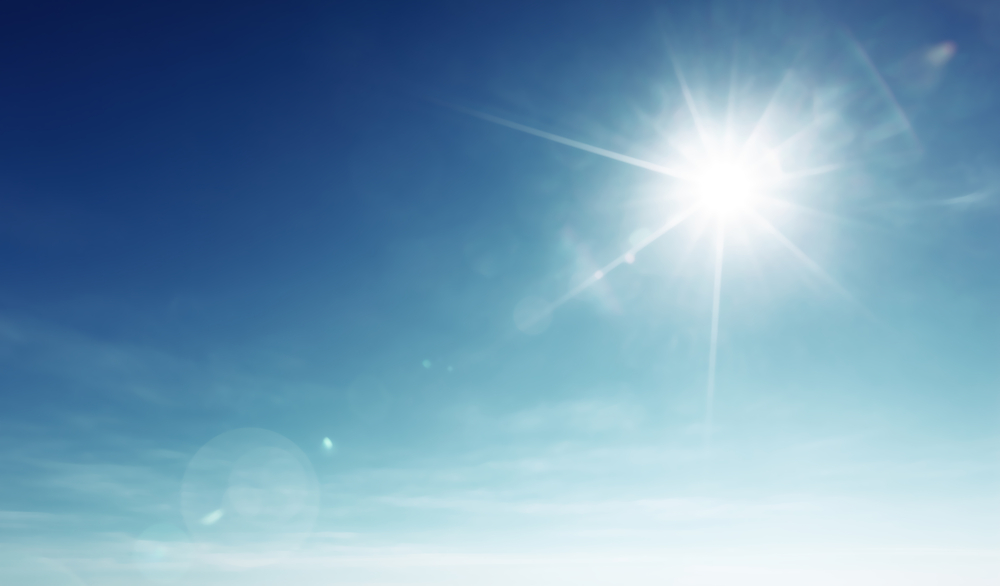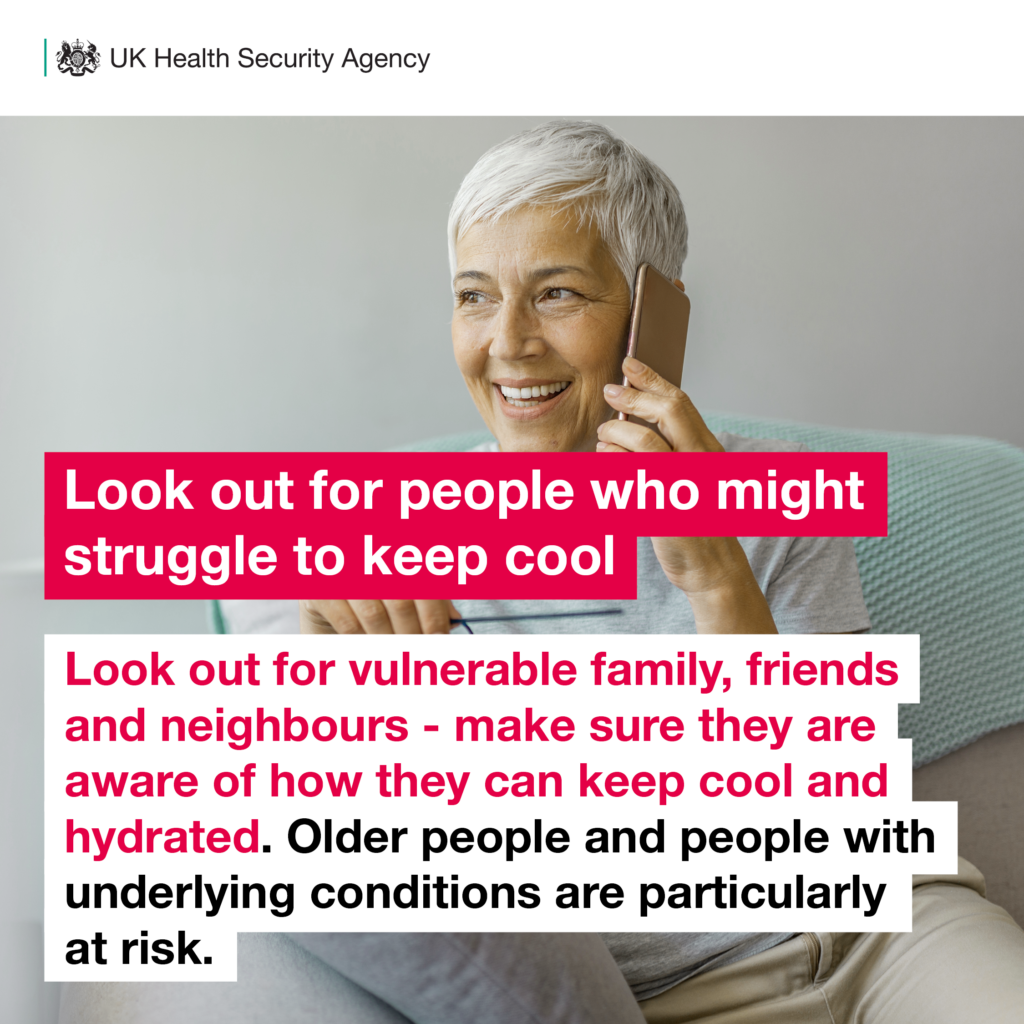
At this time of year most of us look forward to a bright blue sky with the sun shining. Being able to enjoy warm weather with friends and family and spending time outdoors. It makes a huge difference to what can feel like a long, cold winter – and after the pandemic we need a good summer more than ever.
We want everyone to be able to enjoy the hot weather throughout the summer, however very high temperatures can have significant health consequences for some. When the heat rises, it can lead to increased illness and deaths in England.
Throughout June to September we issue heat alerts when necessary, and further information and advice on what each level means can be found here.
Every year we see excess deaths during periods of hot weather. In the summer of 2021, there were only eight days of weather that required a level 3 heat alert and over this period there were 915 excess deaths analysis showed.
Although this was a very short period, there were real health implications for many people and unfortunately this shows that the saying ‘a bit of hot weather never hurt anyone’ simply isn’t true and many of these deaths and health issues can be avoided. Wherever there’s clear evidence of a risk to health security, we’ll provide public health advice to help people minimise these risks.
We are currently experiencing an extended period of extreme heat. Therefore, we need to be prepared for the real possibility of severe health impacts and take the needed steps to try and avoid them.
It is important we all take sensible precautions to avoid becoming unwell and to enjoy the hot weather safely. If you have vulnerable family, friends and neighbours, make sure they are aware of how they can keep themselves protected from the warm weather. It is possible people can experience heat exhaustion and in very serious situations it can become heat stroke.
There is more information available in the NHS advice on coping during heatwaves.
Who is vulnerable?
While everybody is at risk from the health consequences of heat, there are certain factors that increase an individual’s risk during a heatwave. These include:
- older age: especially those over 75 years old, or those living on their own and who are socially isolated, or those living in a care home
- chronic and severe illness: including heart or lung conditions, diabetes, renal insufficiency, Parkinson’s disease or severe mental illness
- inability to adapt behaviour to keep cool: babies and the very young, having a disability, being bed bound, having Alzheimer’s disease
- environmental factors and overexposure: living in a top floor flat, being homeless, activities or jobs that are in hot places or outdoors and include high levels of physical exertion

What can we do to stay safe?
There are a few very simple things we can all to do stay safe when we experience very high temperatures.
- look out for those who may struggle to keep themselves cool and hydrated – older people, those with underlying conditions and those who live alone are particularly at risk
- stay cool indoors by closing curtains on rooms that face the sun – and remember that it may be cooler outdoors than indoors
- drink plenty of fluids and avoid excess alcohol
- never leave anyone in a closed, parked vehicle, especially infants, young children or animals
- check that fridges, freezers and fans are working properly
- try to keep out of the sun between 11am to 3pm, when the UV rays are strongest
- walk in the shade, apply sunscreen and wear a wide-brimmed hat, if you have to go out in the heat
- avoid physical exertion in the hottest parts of the day
- make sure you take water with you if you are travelling
- take care and make sure to follow local safety advice if you are going into the water to cool down
- check medicines can be stored according to the instructions on the packaging
Heat exhaustion and heatstroke
Heat exhaustion is not usually serious if you can cool down within 30 minutes. If it turns into heatstroke, it needs to be treated as an emergency.
Heat exhaustion can include:
- a headache
- dizziness and confusion
- loss of appetite and feeling sick
- excessive sweating and pale, clammy skin
- cramps in the arms, legs and stomach
- fast breathing or pulse
- a high temperature of 38C or above
- being very thirsty
The symptoms are often the same in adults and children, although children may become floppy and sleepy.
If someone is showing signs of heat exhaustion, they need to be cooled down. To do this you should:
- Move them to a cool place.
- Get them to lie down and raise their feet slightly.
- Get them to drink plenty of water. Sports or rehydration drinks are okay.
- Cool their skin – spray or sponge them with cool water and fan them. Cold packs around the armpits or neck are good, too.
- Stay with them until they're better. They should start to cool down and feel better within 30 minutes.
You should call 999 if you or someone you are with is showing any of the signs of heatstroke:
- feeling unwell after 30 minutes of resting in a cool place and drinking plenty of water
- not sweating even while feeling too hot
- a high temperature of 40C or above
- fast breathing or shortness of breath
- feeling confused
- a fit (seizure)
- loss of consciousness
- not responsive
The NHS website has more information on heat exhaustion and heat stroke.
